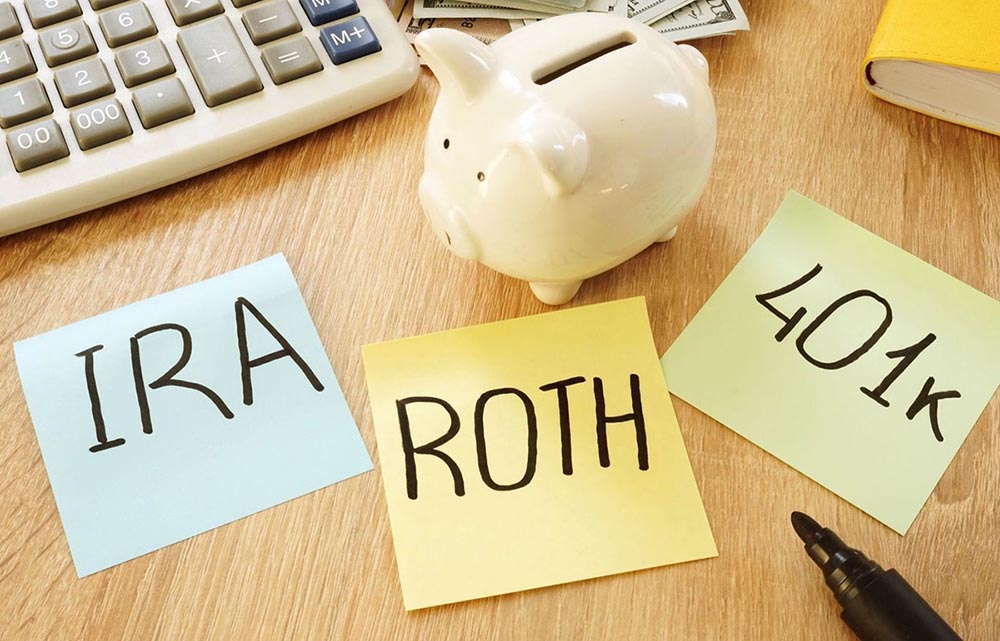By Tricia Lepofsky
As a small business owner or self-employed individual, it can be hard to save for retirement when there are so many other aspects of your life and business to worry about. Too often, retirement planning ends up on the bottom of the to-do list. Even when you finally commit to saving for retirement, it can be difficult to sort through all the options and truly know what’s best for you and your business.
It doesn’t have to be this way! There are many retirement plan options available to small business owners, including solo 401(k) accounts and SEP IRAs. Here’s how to decide which one is right for you.
Solo 401(k)
Also known as an individual 401(k), a solo 401(k) is designed for businesses with only one employee, the business owner. The IRS calls it a one-participant 401(k) and only businesses without employees are eligible.
Key Benefits
- Roth accounts: As with other 401(k) plans, the solo 401(k) offers both traditional and Roth accounts. With a traditional account, contributions are made pre-tax and taxes are paid upon withdrawal. Roth 401(k)s, on the other hand, are funded with after-tax dollars but they grow tax-free. This gives you the flexibility to actively choose the contribution style that works best for your specific tax situation.
- Employee deferrals: Solo 401(k) plans also allow employee deferrals in addition to the employer contribution. This option is not available with SEP IRAs.
- Loan provisions: Another benefit of this plan is the ability to take loans against the account balance up to the lesser of 50% of the balance or $50,000.
- Higher contribution limits: Solo 401(k) plans have two types of contribution limits. First is the profit-sharing limit for employer contributions which is the lesser of 25% of business revenue or $61,000. (1) The next limit is the annual employee elective deferral limit, which is $20,500 for individuals under age 50, and $27,000 for those age 50 and older. (2) The combined limit for both employer and employee contributions is still $61,000 (or $67,000 if older than 50), but because there are two types of contributions permitted, many self-employed individuals will be able to contribute more and receive a larger tax break than if they used a SEP IRA.
Drawbacks
- Strict reporting requirements: If your account balance exceeds $250,000, you will be required to file an annual return with the IRS. The return consists of Form 5500 and can be quite extensive. Even if you don’t have $250,000 in your account, you may be required to file.
- Only available for businesses with no employees: Solo 401(k)s are only available for businesses with no employees except the owner’s spouse. If you have plans to expand your business and hire additional employees, opening a solo 401(k) is probably not for you. You may be required to convert your plan to a qualified 401(k) and contribute on behalf of your employees if you were to hire any.
SEP IRA
A Simplified Employee Pension (SEP) IRA functions similarly to a traditional IRA, except as the owner, you set up and contribute to accounts for both yourself and your employees.
Key Benefits
- Tax-deductible contributions: Your contributions are tax-deductible up to 25% of all participant’s compensation, or up to 25% of net earnings if you’re self-employed. (3)
- Higher contribution limit: In 2022, the contribution limit for a SEP IRA is the lesser of 25% of an employee’s compensation or $61,000. (4) An advantage of the SEP-IRA is that this limit is higher than the limit for tax-advantaged accounts like traditional and Roth IRAs.
- Easy setup & maintenance: SEP IRAs do not require the extensive reporting requirements required by other qualified retirement plans. You are also not responsible for the underlying investments in your employees’ accounts. As the employer, you simply choose the financial institution you want to work with and open the accounts. Beyond that, it is the employees’ responsibility to choose and manage their own investments. Additionally, many financial institutions offer SEP plans with little to no management fees, making this a very inexpensive and attractive option for small business owners.
- Contributions are discretionary: Contributions to these plans are flexible and discretionary, meaning you can adjust your contributions as your cash flow changes. This ensures that you never contribute more than you bring in.
Drawbacks
- Strict eligibility requirements: According to the IRS, all employees must be allowed to participate in the SEP plan if they are age 21 or older, earned at least $650 in 2022, and worked for you for at least 3 of the last 5 years. (5) This can make SEP IRAs an inflexible option for small businesses that want to limit the number of employees in the plan.
- When you do contribute, you must contribute to everyone: In the years that you contribute to a SEP IRA, you are required to make equal contributions as a percentage of compensation to all eligible employees. For instance, if you contribute 20% of your income to your own SEP IRA, you must then contribute 20% of every employee’s income to their respective accounts. Because of this, SEP IRAs are generally recommended for self-employed individuals or small businesses with very few employees.
- No loan provisions, Roth accounts, catch-up contributions, or employee deferrals: Many of the benefits offered by solo 401(k)s are not available for SEP IRAs.
Which Choice Is Right for You?
If you are a business owner or self-employed individual, don’t wait to start saving for retirement. We at KFA Private Wealth Group can help you decide which retirement account is right for you and your business. To learn more about your options, email tricia@kfapwg.com or call 571-327-2222 to schedule an appointment.
About Tricia
Tricia Lepofsky is a financial advisor at KFA Private Wealth Group, a registered independent advisory firm founded on the premise of providing sound financial and investment advice. With a background in music education and opera, Tricia transitioned to the financial industry to help people understand what their money can do and feel more in control as they work toward their goals. Tricia is known for her attention to detail and her dedication to her clients and their unique financial challenges. She is passionate about building relationships with her clients and partnering with them as they walk through life’s milestones, keeping them accountable and motivated to pursue their goals. While she serves a diverse range of clients, Tricia uses her background of 18 years in the Washington National Opera and Washington Concert Opera to specialize in serving hardworking, intelligent individuals who have a connection to the arts. In her spare time, Tricia loves to travel with her husband, Mark, hike trails along the Potomac River or in the Blue Ridge Mountains, and support former colleagues by attending live performances of operas and musicals. To learn more about Tricia, connect with her on LinkedIn.
_______________
(3) https://www.irs.gov/retirement-plans/retirement-plans-faqs-regarding-seps
(4) https://www.irs.gov/retirement-plans/retirement-plans-faqs-regarding-seps
(5) https://www.irs.gov/retirement-plans/retirement-plans-faqs-regarding-seps




